The following travelogue was written for MyInd Makers, after I came back from a vacation to Turkey. Posting it here for reference.
During a recent visit to Turkey, I was getting ready to pay my bill, and was just assembling money on the table, and something caught my eye suddenly. It was a mathematic equation on one side of a 10 TL (Turkish Lira) note!
Of course, I didn’t know who Dr. Cahit Arf was, or what his equation meant to science. But I googled him, and found out that he is Turkey’s most famous mathematician and has proposed the Arf invariant.
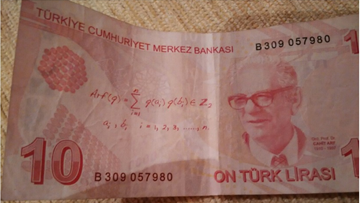
I found it amazing and astonishing that a country has chosen to honor their best mathematician in this manner. Then I got interested in the images on the other notes.
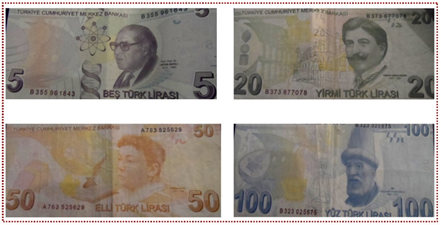
On their 5 TL note, they have the image of Dr. Ayidin Sayili, who is a historian of science in Turkey (All we hear in India is about “Eminent Historians”!). On their 20 TL note is the image of Mimar Kemaleddin (Mimar means Architect!) who is one of their most famous architects. On their 50 TL note is the image of Fatima Aliye – a litterateur. And on their 100 TL note is the image of Buhurizade Mustafa Itri – one of their famous poet and musician from the 1600s.
I was wondering why this is not possible in India. We release stamps in honour of various eminent folks, but stamps are so passe now. A vast majority have moved away from using stamps. After seeing what Turkey has done, I am of the firm opinion that currency notes are one of the best ways to remind people of the contributions of folks from different fields.
Co-incidentally, I recently received this collage in one of the whatsapp groups – what do the images on our currency notes represent?
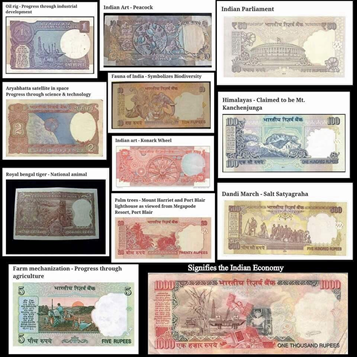
Vague representations such as “Indian economy”, “Agriculture” don’t do enough justice to the achievements of our country. The choice of high achievers must include people from *all* fields – For long, we have focused a lot on either glorifying politicians or writers/artists. The list can be updated every 5 years – this way, we will have notes that circulate with images of eminent scientists, engineers, writers, sportspersons, farmers, economists etc. There can also be images of various engineering marvels of India – our huge forts and temples and palaces – it is high time we start feeling proud about these engineering marvels as well.
Salt Water – A theory of thought forms
In Istanbul I visited a modern art gallery museum. I am generally not a big fan of “modern art” given its vague nature. Half an hour into the visit, I was still not very keen to continue. And then we entered into this section called “Salt Water – A theory of thought forms”. I thought this was another random art section with random interpretations. What I saw though threw me off balance.
There was a long table, with graphical reconstructions of various curves, graphs, theories, formulae etc. I wish to paste a few relevant portions from the introduction to this section:
“There are literal waves of water, but also waves of people, of emotion and memory. It is through identification of waves that we acknowledge patterns. Perhaps a wave is simply time – the feeling of a difference between its high and low points…”
And the exhibition goes on to show us graphical representations of various theories, through waves and curves, related to subjects in economics, finance, mathematics, market behavior etc! The name of the curve/graph is written next to each illustration – if one has the time, they can google many such theories and learn more about them.
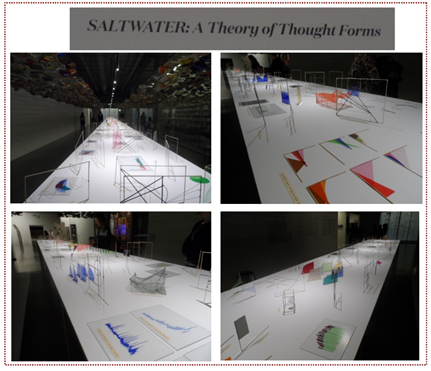
What has fascinated me the most is the importance that Turkey is giving to different fields of study, and not just to one or two of them? Typically, we only get to hear/read/see material related to rulers or writers/poets – this visit has been a new revelation!
The vegetarian food!
I never thought I would say this – but after eating in various restaurants in Turkey for 10 days, I am fascinated by vegetarian food also. I love eating non-vegetarian (wanted to say, hardcore non-vegetarian but Sagarika Ghose recently changed the definition of that term, so can’t use it!) – And it was exciting to see how the hotels serve a wide variety of vegetarian options.
Turkish Meze consists of wide range of appetizers, mostly cold ones and mostly prepared from vegetables. At various hotels, we had a variety of items from the meze – pickled vine leaves stuffed with rice, lettuce wrap with an awesome paste inside it (this paste was unique, and we loved it very much. Lettuce is typically eaten with a sauce or oil, but this combination was just too good), burnt brinjal (egg plant) paste with tomato and olive oil etc. Yoghurt and tomatoes are widely used here – the taste of the tomatoes was just very good. Just like we make a lot of curries with tomatoes at home, it is common practice at various hotels in Turkey too.
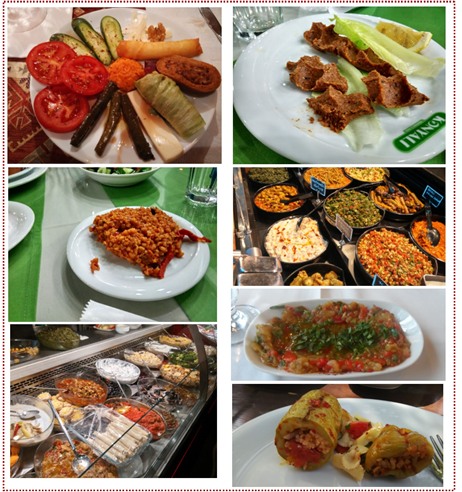
Many vegetables are dried here – tomatoes, capsicum, brinjal etc. They are then boiled, and stuffed with rice and a variety of spices. These dishes are also very tasty. The vegetables are dried keeping in mind the upcoming winter – since farmers can’t produce these vegetables then. Then there are different types of rice – grounded rice is mixed with local spices (therefore looks red in color – can be seen in the above image) and served as an accompaniment – this is tastier than the chicken I had! There is the pilaf rice – combination of local spices, semiya, and some sweet ingredient that gives it a different taste!
Of course I had non-vegetarian food too, but I was very impressed with how so many vegetables are being used by their hotels. Almost every hotel we went to (and we went to villages, towns and cities – so we covered quite a range) had a good variety of veg and non-vegetarian offering. All their meals are accompanied with different types of rotis or breads – some of the rotis we had were delicious.
Their food markets are also superb – many varieties of spices, tea, nuts, vegetables, fishes etc. are sold. I never knew that so many types of olives even existed!
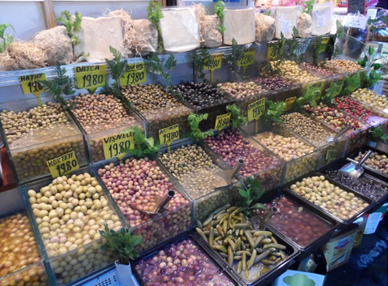
It is really high time our hotels come out of the standard paneer, gobi, Manchurian, and “mix veg korma” varieties. We must also explore options outside of the naan (And no, plain naan, butter naan are not two different things!). We need to celebrate the diversity of the food we have at home with what we serve in our hotels too!
Turkey is a very beautiful and fascinating place to visit – its natural wonders, villages, historical buildings, cities that are abuzz – all these have made the trip very interesting. I have only written about the things that were very different from the places we visited so far. And of course, there is a lot to learn for us from all these too.
PS: There is one last thing I learnt – that something like these exist :)
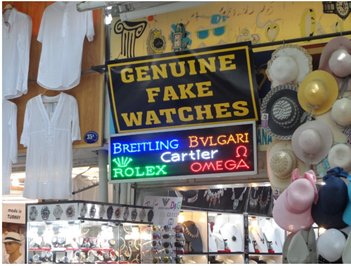

0 comments:
Post a Comment